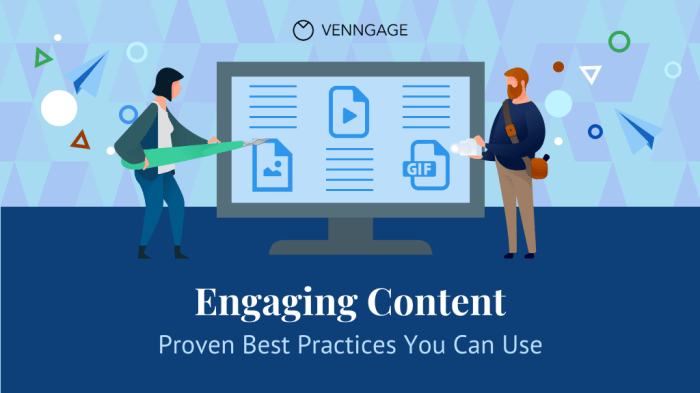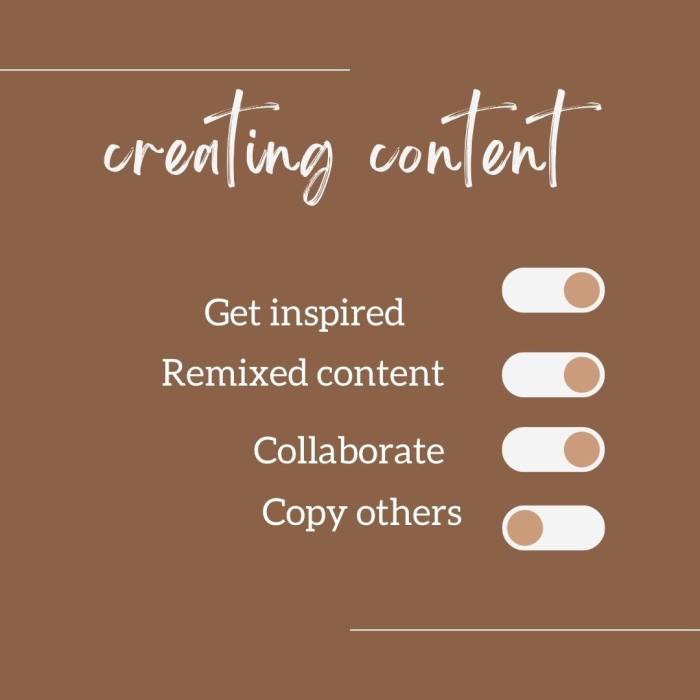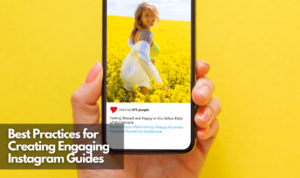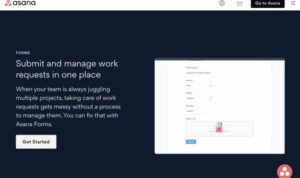Creating Engaging Blog Content sets the stage for attracting and retaining readers with captivating storytelling and interactive elements that enhance the user experience. Dive into the world of content creation where creativity meets strategy for maximum impact.
Importance of Engaging Blog Content

Creating engaging blog content is crucial for attracting and retaining readers because it helps to capture their attention and keep them coming back for more. Engaging content is more likely to be shared on social media platforms, increasing the reach of your blog and attracting new readers.
Examples of Successful Blogs
Some successful blogs that have gained popularity due to their engaging content include:
- The Blonde Salad: This fashion blog by Chiara Ferragni incorporates stunning visuals, personal stories, and interactive elements to keep readers hooked.
- Nerd Fitness: A fitness blog that uses storytelling techniques to inspire and motivate readers on their health and fitness journey.
- Smitten Kitchen: A food blog that combines mouth-watering recipes with engaging writing to create a loyal following of food enthusiasts.
Improving and Increasing Traffic
Engaging content can help improve by increasing the time readers spend on your website, reducing bounce rates, and encouraging backlinks from other websites. This, in turn, can lead to higher search engine rankings and increased organic traffic to your blog.
Tips for Creating Engaging Content
- Use storytelling techniques to make your content more relatable and interesting.
- Incorporate interactive elements such as polls, quizzes, and videos to engage your audience.
- Ask questions and encourage reader participation to create a sense of community around your blog.
- Create visually appealing content with images, infographics, and videos to break up text and keep readers engaged.
Understanding Your Audience
Knowing your target audience is crucial when creating blog content because it allows you to tailor your posts to their interests and preferences. This helps in attracting and retaining readers, building a loyal following, and ultimately driving more traffic to your blog.
Importance of Audience Research
Conducting audience research helps you better understand the demographics, psychographics, behaviors, and preferences of your target audience. This can be done through surveys, interviews, social media analytics, and website analytics. By gathering this information, you can create content that resonates with your audience, leading to higher engagement and interaction.
Creating Buyer Personas
Creating buyer personas involves developing fictional representations of your ideal customers based on data and research. These personas include details such as age, gender, interests, pain points, and buying behaviors. By creating detailed buyer personas, you can tailor your blog content to address the specific needs and preferences of different segments of your audience.
Examples of Personalized Content, Creating Engaging Blog Content
Brands like Amazon and Netflix have successfully engaged their audience through personalized content. Amazon uses personalized product recommendations based on user behavior and purchase history, while Netflix suggests movies and TV shows based on viewing preferences. By personalizing content, these brands create a more tailored and relevant experience for their audience, leading to increased customer satisfaction and loyalty.
Content Ideas and Inspiration
When it comes to creating engaging blog content, finding inspiration is key. Whether it’s from industry trends, customer feedback, or your own personal experiences, drawing from various sources can help you develop fresh and interesting ideas for your blog.
Sources of Inspiration
- Industry Trends: Keeping up to date with the latest trends in your niche can give you valuable insights into what topics are currently resonating with your audience.
- Customer Feedback: Listening to feedback from your readers can provide you with ideas on what type of content they find most engaging and valuable.
- Personal Experiences: Sharing your own experiences and stories can help you connect with your audience on a more personal level.
Types of Engaging Content
- Listicles: People love lists, so creating content in a list format can help make your blog posts more digestible and shareable.
- How-To Guides: Providing step-by-step guides on how to accomplish a specific task can be very helpful and engaging for your readers.
- Case Studies: Sharing real-life examples and success stories can help illustrate your points and provide valuable insights to your audience.
- Interviews: Conducting interviews with industry experts or influencers can bring a fresh perspective to your blog and attract a wider audience.
Repurposing Content
Repurposing existing content is a great way to keep your blog fresh and engaging. You can turn a blog post into a video, create an infographic from a listicle, or even update and expand on a popular post to provide more value to your readers.
Tools and Resources
- Google Trends: Helps you discover trending topics in your industry.
- BuzzSumo: Allows you to analyze what type of content performs best in your niche.
- Feedly: Curate content from various sources to spark ideas for your blog posts.
- Canva: Create visually appealing graphics and infographics to enhance your blog content.
Writing Style and Formatting: Creating Engaging Blog Content

When it comes to creating engaging blog content, having a clear and captivating writing style is crucial. Your writing style sets the tone for your blog and determines how easily your audience can understand and connect with your content. Here are some tips to help you enhance your writing style and format your blog posts effectively.
Structuring Blog Posts
Structuring your blog posts is essential for readability and user engagement. Use subheadings to break down your content into easily digestible sections. Bullet points can help highlight key points and make your content more scannable. Including images throughout your post can also enhance the visual appeal and keep your audience interested.
Incorporating Multimedia Elements
Adding multimedia elements like videos, infographics, and interactive graphics can take your blog content to the next level. Videos can help explain complex concepts, while infographics can present data in a visually appealing way. Interactive graphics engage your audience and encourage them to interact with your content.
Role of Formatting
Formatting plays a crucial role in enhancing the overall aesthetics and user experience of your blog. Use a clean and easy-to-read font, and make sure your text is properly aligned. Incorporate white space to break up your content and make it more visually appealing. Consistent formatting throughout your blog posts will help maintain a cohesive look and feel.
Promoting Engagement and Interaction
When it comes to creating engaging blog content, promoting interaction with your readers is key to building a loyal following. By encouraging comments, social media sharing, and including calls to action, you can create a sense of community and keep your audience coming back for more.
Encouraging Reader Engagement
- Ask open-ended questions at the end of your posts to prompt discussion in the comments section.
- Invite readers to share your content on social media by including social sharing buttons on your blog.
- Include clear calls to action throughout your posts, encouraging readers to subscribe to your newsletter, download a freebie, or follow you on social media.
Importance of Responding to Comments
- Responding to comments shows your readers that you value their input and fosters a sense of community around your blog.
- Engage with your audience by answering questions, acknowledging feedback, and participating in discussions on your blog.
Interactive Content Formats
- Create interactive quizzes to engage readers and test their knowledge on a specific topic related to your blog.
- Run polls to gather feedback from your audience and involve them in decision-making processes for future content.
- Host contests with prizes to incentivize reader participation and generate excitement around your blog.
Creating a Conversational Tone
- Use a casual and friendly tone in your writing to make readers feel like they are having a conversation with a friend.
- Avoid jargon and complex language, opting for simple and relatable terms that resonate with your audience.
- Include personal anecdotes and stories to establish a connection with your readers and encourage them to share their own experiences in the comments.





